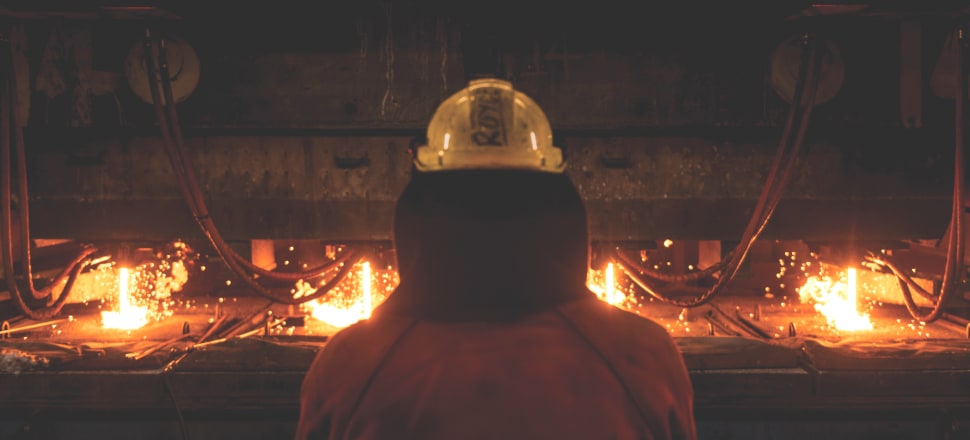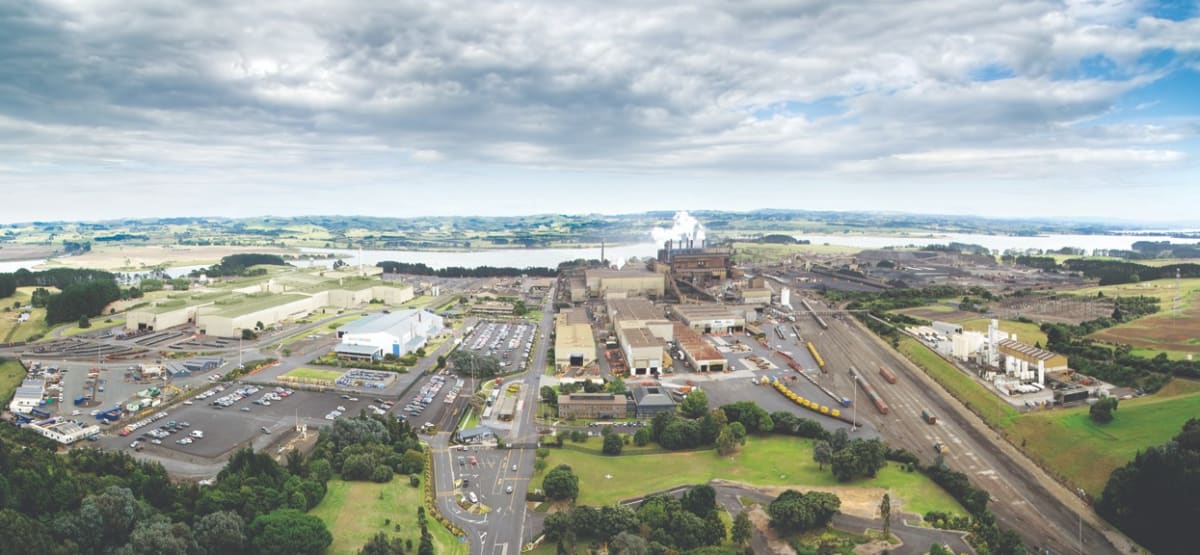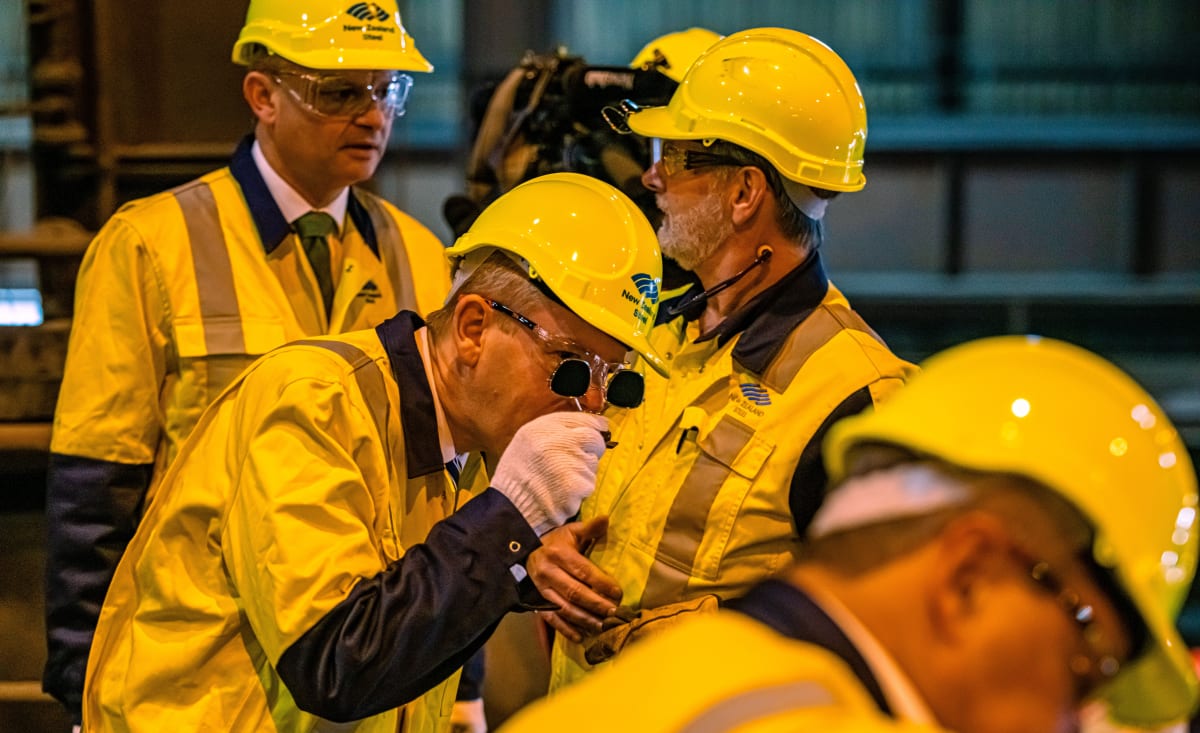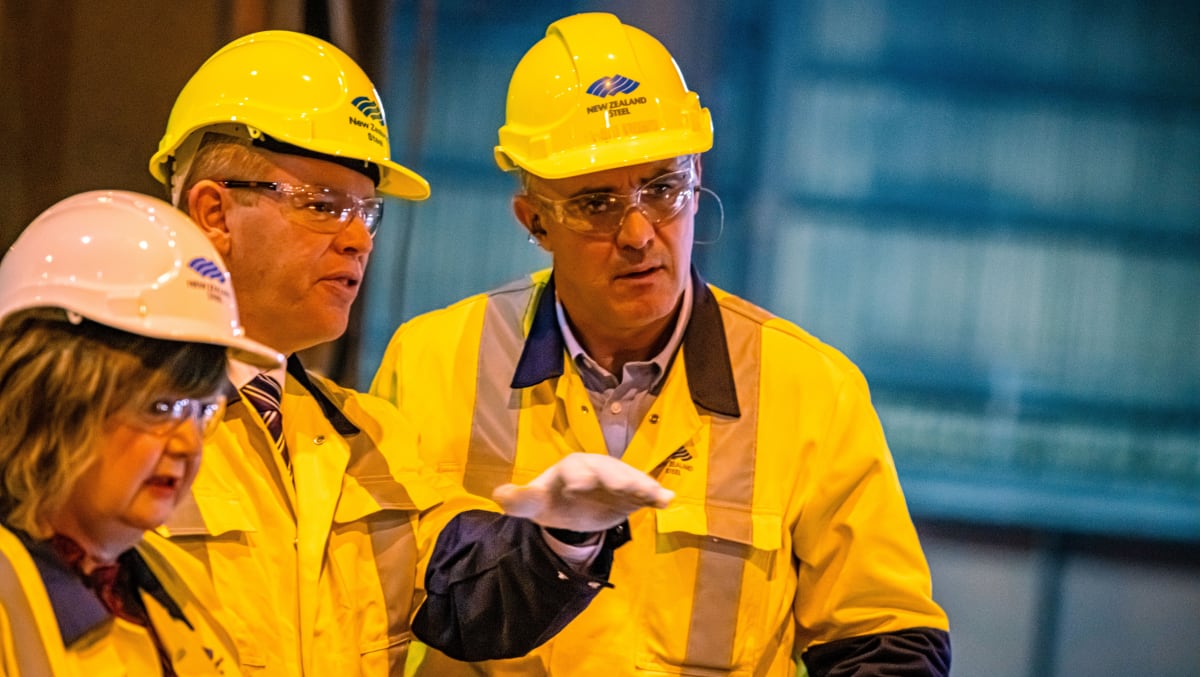
NZ Steel's next step is using hydrogen and natural gas to eliminate emissions in the first step of turning ironsands into steel, but the company says commercial deployment is at least decade away.
NZ Steel and the government have agreed to invest $300 million in a major upgrade of the Glenbrook steel mill south of Auckland that will cut the plant's greenhouse gas emissions by about 45 percent.
The Government will contribute $140m to the project through its flagship fund to help industries decarbonise.
The 800,000 tonnes of emissions removed will represent 45 percent of NZ Steel's current emissions, 1 percent of NZ's annual emissions and 5.3 percent of the emissions cuts New Zealand needs to achieve under its 2026-2030 carbon budget.
READ MORE: * Steel mill expects 20-plus year consent, thanks to loophole in climate law * Bluescope Steel offers hope of continued production at the Glenbrook mill
The investment in the new electric arc furnace will allow NZ Steel to decommission two of its existing but elderly blast furnaces fuelled by coal.
“This is a necessary step to secure steelmaking in NZ for many years to come,” said Robin Davies, the company's chief executive.
“This model will make NZ as close to self-sufficient as possible using renewable energy to recycle domestic scrap steel rather than shipping it offshore.”

Currently New Zealand generates some 500,000 tonnes a year of scrap metal, most of which is exported to steel repressors abroad. The new furnace will require some 300,000 tonnes of scrap a year, which the company is confident it can source economically, he added. It will also use some iron from NZ Steel's existing production.
NZ Steel has agreed in principle to a 30MW, 10-year electricity supply agreement with Contact Energy.
This will help underpin Contact’s current plans to invest $1.1 billion in new renewable generation, which is equal to some 5 percent of the country’s current electricity supply, said Mike Fuge, Contact's chief executive.
Moreover, NZ Steel will be able to reduce the furnace's output at times of peak electricity demand, thereby taking the pressure off generators and Transpower, the operator of the grid.

BlueScope, NZ Steel's Australian parent, runs two large electric furnaces in the US making some 3 million tonnes of steel a year, and one in Australia.
The NZ Steel deal showed the power of well-constructed public/private partnerships, said Mark Vassella, BlueScope's chief executive, who attended the Glenbrook announcement made yesterday by the Prime Minister. Energy Minister Megan Woods and Climate Minister James Shaw accompanied Chris Hipkins.
"This is the biggest example we have in New Zealand of the move towards electrification and is tangible evidence of the demand for renewable energy." – Mike Fuge, Contact Energy
BlueScope has warned in recent years that it was considering closing the plant. Glenbrook and Pacific operations account for some 8 percent of BlueScope's operating earnings.
In 2016, BlueScope wrote down the value of NZ Steel by half and put up for sale the rights to the Taharoa ironsands that are the feedstock for the steel mill.
This February, NZ Steel said it was considering investing in an electric furnace for Glenbrook. While it had first floated the idea with the government about a year ago, detailed studies and negotiations between the two parties have take place over the past six months or so.
The Glenbrook investment is the largest investment commitment to date by the Government Investment in Decarbonising Industry (GIDI) fund, run by the Energy Efficiency and Conservation Authority. The emissions saved will be larger than those from some 65 prior GIDI investments over recent years.
"An electric arc furnace makes sense when there’s enough affordable renewable energy and scrap steel available, a way to get that scrap steel to site, and the right policy settings." – Robin Davies, NZ Steel
Some of the government's investment is performance-based: NZ Steel will earn a $10m incentive payment if it gets the new furnace operational by January 2027 and another $20m if it can double by 2030 the 800,000 tonnes of emissions savings it is initially targeting.
“An electric arc furnace makes sense when there’s enough affordable renewable energy and scrap steel available, a way to get that scrap steel to site, and the right policy settings,” Robin Davies said.

“We’ll firm up the details of the different aspects of the project over the coming months but crucially, New Zealand has all these essential enablers in place.”
And BlueScope and NZ Steel will continue to investigate the use of hydrogen and natural gas to eliminate carbon emissions when processing ironsands into iron before it is then turned into steel in the electric arc furnace.
This is the main decarbonisation pathway the steel industry is pursuing worldwide to turn iron ore into steel. If it turns out to be feasible, commercial deployment is at least decade away, he added







